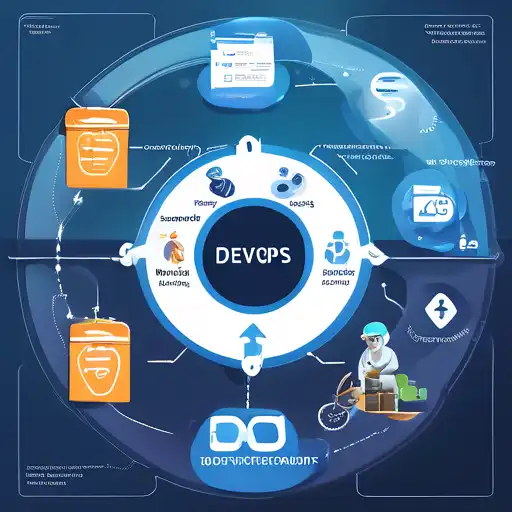Introduction to DevOps in Software Development
DevOps has revolutionized the way software is developed, deployed, and maintained. By bridging the gap between development and operations teams, DevOps practices ensure a smoother, more efficient software development lifecycle (SDLC). This article explores the transformative impact of DevOps on the SDLC, highlighting key benefits and practices.
Key Benefits of DevOps in the SDLC
DevOps introduces a culture of collaboration and continuous improvement, leading to several advantages:
- Faster Time to Market: Continuous integration and continuous delivery (CI/CD) pipelines automate the software release process, significantly reducing the time from development to deployment.
- Improved Collaboration: DevOps fosters a culture of shared responsibility, breaking down silos between development, operations, and other stakeholders.
- Higher Quality Products: Automated testing and monitoring ensure that issues are identified and resolved early in the development process, leading to more reliable software.
- Increased Efficiency: Automation of repetitive tasks frees up teams to focus on innovation and strategic initiatives.
DevOps Practices That Enhance the SDLC
Implementing DevOps requires adopting specific practices that streamline the SDLC:
- Continuous Integration and Continuous Delivery (CI/CD): These practices enable teams to integrate code changes more frequently and deploy them automatically, ensuring that software can be released at any time.
- Infrastructure as Code (IaC): IaC allows teams to manage and provision infrastructure through code, improving consistency and reducing manual errors.
- Monitoring and Logging: Continuous monitoring of applications and infrastructure helps teams detect and address issues in real-time, improving system reliability.
- Microservices Architecture: Adopting a microservices architecture makes applications more modular and easier to update, aligning with DevOps principles of agility and scalability.
Challenges and Solutions in Adopting DevOps
While DevOps offers numerous benefits, organizations may face challenges in its adoption:
- Cultural Resistance: Shifting to a DevOps culture requires changes in mindset and workflows. Encouraging open communication and collaboration can help overcome resistance.
- Toolchain Complexity: The plethora of DevOps tools available can be overwhelming. Selecting tools that integrate well and meet the organization's specific needs is crucial.
- Security Concerns: Integrating security into the DevOps process (DevSecOps) ensures that security is not an afterthought but a integral part of the SDLC.
For more insights on integrating security into your DevOps practices, explore our guide on DevSecOps best practices.
Conclusion
DevOps significantly improves the software development lifecycle by fostering collaboration, automating processes, and enhancing product quality. By adopting DevOps practices, organizations can achieve faster delivery times, higher efficiency, and more reliable software products. As the technology landscape evolves, DevOps will continue to play a pivotal role in shaping the future of software development.
For further reading on optimizing your development processes, check out our article on Agile vs. DevOps: Complementary or Competing?.
